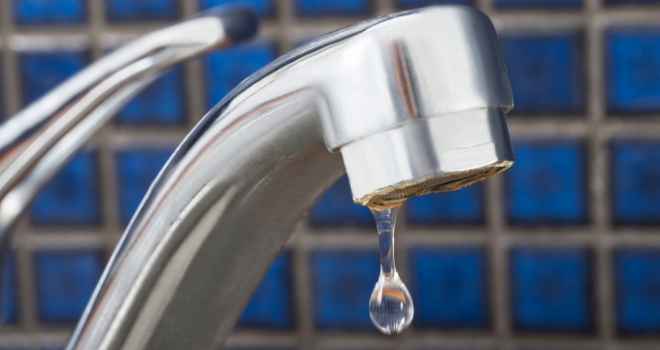
According to the research, 35% of Brits have had to deal with a leak in the past 12 months, equating to approximately 18 million adults across the UK and of those, one in four (5.2 million) have had a major problem that needed fixing. For those on a water meter, a leak of one drip per second could increase an annual water bill by as much as six per cent.
On average, Brits leave a leaky tap for over three weeks (25 days) before attending to it, however, 13% have left it longer than a month, and 11% of adults haven’t fixed the leak in their home, leaving those on a water meter literally letting money run down the drain. The household appliance most likely to cause issues is the kitchen sink (15%), followed by the bathroom sink (12%) and the shower head (8%).
As the Environmental Agency warns that climate change and population increases continue to strain our water supplies, Direct Line is calling on householders to be aware of water waste and address leaks as soon as possible. Although there may be a cost involved to fix the issue, repairing a leak immediately could save considerable money in the long-term, as a consistent leak can often result in further damage to your home.
The most common reason people dealt with a dripping tap straight away was so they didn’t waste water (24 per cent), which was followed by the increase it would make to their water bill (13 per cent). However, 11 per cent said they left a leak because it didn’t bother them and seven per cent said that they found the drip annoying but didn’t fix it because they didn’t use the room the tap was in or because it would be too expensive to do so.
Direct Line tips on how to fix a dripping tap:
• Turn off the water: Always cut off the water supply to the tap before working on it, this will prevent any additional damage being done by leaking water. This can be done by either the stopcock or the isolation valve. The isolation valve can usually be found underneath the sink. Always run the tap until there is no water left to ensure it has all gone.
• Remove handle: Remove the tap handle. This can usually be done by lifting the cover and removing the screw. Always put the plug in the sink before unscrewing anything. That way nothing important will get lost down the drain.
• Unscrew tap mechanism: Unscrew the tap mechanism by turning it anti-clockwise. This will allow you to get to the tap washer on the bottom. When taking the tap apart, remove and place out in the order you take apart to make it simpler to reconstruct.
• Replacing a ceramic disc: If you need to replace the ceramic disc, once you take off the metal shroud you’ll be able to see the valve. Grip with an adjustable spanner and turn until loose enough to remove. Put on the replacement and tighten it. You can then reconstruct the tap.
• Replacing rubber washer: Grip and turn the valve with an adjustable spanner until it is loose enough to remove. Slide or unscrew the rubber washer off and put the new one on. Once that is complete, put the valve back on, tighten up and put the tap back together.
• Replacing an O-ring: If the O-ring is the issue, unscrew the grub screw at the bottom of the spout, then lift the spout off carefully. The O-ring should then be visible at the base, use a flat-head screwdriver to loosen and slide it off or you can snip with a pair of scissors to remove. Roll the replacement on, put the spout back, tighten the grub screw and reconstruct the whole tap.
Ryan Misiakowski, Disaster Recovery Manager at Direct Line Home Plus commented: “The drip, drip, drip of a leaky tap can not only be annoying, but also have a negative impact on the environment and your household bills. While it might not seem particularly problematic to begin with, this research shows just how much water is going to waste and how costly one small leak can be.
The Environmental Agency has warned that much of England, particularly the South East, could see significant supply shortages by 2050. By being vigilant and attending to leaks quickly and efficiently, no matter the size, could prevent water waste and save you money on bills and water damage to your home. Homeowners should also ensure they have adequate home insurance cover to avoid a hefty bill should their home be damaged by water from a leak.”





